Tales of a 21st Century Gypsy
June 24, 2005 Washington, D.C.
I stayed in a hotel in Washington. It was a strange place to be; I hadnít stayed in a hotel here since 1974, on the obligatory ďhigh school trip to Washington.Ē I stopped there for a work meeting, and the organizers were paying, so I decided it would be simpler to accept their offer than to stay in my house. But it felt very peculiar and not a little disorienting to arrive at National Airport and head to a downtown hotel instead of to my house in Arlington. I wondered why I wasnít going home, and then I wondered whether a house I havenít lived in for three years is in fact home.
Staying at a hotel turned out to be very interesting. It made me see Washington as if I were an outsider, not as the place where Iíve spent most of my adult life. It also made me se how much the city has changed since I moved there the first time, when I quit college in 1975. My hotel was on 12th and K Streets, a neighborhood of boxy office buildings and huge chain hotels Ė Marriotts and Sheratons and Hyatts. In 1975 - and a long after that, in reality as well as in my imagination Ė this neighborhood was a forgotten, derelict place, a wasteland of empty lots and boarded up townhouses and just a few old offices and warehouses. With one exception, it wasnít a place I ever went to; it was a place I sped through on my bicycle en route from Dupont Circle to Union Station or Capitol Hill. That exception was AVís, an old Italian restaurant renowned for intense garlic. AVís was in nowhere land, but famous, and occasionally a group of us would find our way there for dinner.
I donít know when AVís became history, but Iím sure ití s not there any more. Now only a few empty lots remain, and they are construction sites instead of parking. The few townhouses left have been renovated into expensive offices, and new buildings are everywhere. The hotels astound me. Itís not an interesting place to stay. There are few shops and at night the streets are deserted except for the strong present of men left behind from the derelict days, dressed in grimy rags and tottering as they shuffle past. A few well-dressed groups cluster outside the night spots, but the only vibrant bit if what remains of Washingtonís Chinatown, where the late-night restaurants glow with warm light that spills onto the sidewalk, and you can get take-out until all hours. Years ago there was a strong Chinese community here, but the construction of a new arena nearby has brought in the same mix of chain restaurants and bars that fill every American suburb and shopping mall. I was glad to find a place to pick up some Szechuan bean curd, which I carried back to the hotel to eat.
My meeting was at the Brookings Institution, which is near Dupont Circle, more my regular stomping ground than 12th and K or Chinatown. Walking over from the hotel, it seemed like every street, even every building, has played a role in some part of my life. In 1976 I worked across from Brookings, in overflow office space rented by the American Association for the Advancement of Science. At 15th and Massachusetts I walked past what used to be the main office of AAAS. Now itís the Tunisian embassy, which always makes me think of the time I spent in Tunis working on my dissertation. Next door to Brookings, in an extension of their building, is what used to be the offices of Resources for the Future; I worked there in 1980. RFF is now in a complex of two connecting buildings, one on P Street and the other at 16th and O. I worked in that complex in 1996, for IUCN. Across the street on the corner of 16th and P is the set of townhouses that used to be the DC youth hostel. I lived there for five months when I first moved to Washington back in 1975. Itís been offices for many years now; from the window of my hotel room I looked across a construction site to the new hostel at 11th and K. From the P Street steps of the current RFF building I could look through the chain link fence of the playground at the faÁade of The Cairo, an apartment building on Q Street where I lived from 1989 to 1991. The Cairo has historic significance. When it was built in 1898 to provide luxurious apartments for elected officials in DC for the Congressional session, it was the tallest building in the city, rising above the dome of the capitol. This was considered quite inappropriate, and led to the placement of a height restriction on all structures in downtown DC. That in turn led to the proliferation of squat, square buildings in the city. If you canít go above ten stories, you donít waste floor space on setbacks. By the 1970s the Cairo had been a hotel for decades when it was converted to condos and they had a big sale of the old hotel furniture. My friend Peter bought a big leather chair which he moved into the house we shared. I think he still has the chair from the Cairo, up in Rochester, New York where he lives now.
Dupont Circle has changed a lot too, especially to its east. Back in 1975, no on ventured east of 16th Street because it was rundown and dangerous. 18th Street had been the riot corridor in 1968, and in í75 many buildings were still boarded up. I used to venture to a food coop at 18th and S, and we all furnished our bedrooms cheaply at a well-known used furniture store further up 18th in Adams Morgan. When an imposing townhouse at 18th and Q was renovated, we wondered that someone thought the investment worthwhile. When a restaurant in Adams Morgan opened up sidewalk seating in 1980, we were flabbergasted. The food coop became a chic French restaurant years ago, and I donít know when the used furniture store stopped supplying all the interns and young college graduates who flock to Washington. Adams Morgan is one of the cityís trendiest spots for dining and night life. That townhouse at 18th and Q is probably worth millions, a block form the metro and from shops, restaurants, and cafes that hum with activity until late into the evening.
The changes to the east are more recent and mor surprising. In 1975 there was a very grotty Safeway supermarket on P between 14th and 15th, and a few small stores of the kind that have metal cages to keep the merchandise from walking, the windows from being broken, or holdup artists from threatening the staff. The Safeway closed a long time ago, but as late as 1998 I sometimes parked in a dangerously rundown parking garage across the street from where it had been. Now that garage has been replaced by a gleaming new Whole Foods Market, and the Ethiopian men who parked the cars have disappeared. The seedy liquor store next to the garage has been transformed into a chic wine shop, with blonde wood interiors and signs announcing wine and cheese tastings. Where the Safeway once stood is a block of luxury condominiums. The young, affluent, mostly white, and strongly gay community of Dupont Circle and 17th Street has moved east. All thatís left of the lower class blacks and Hispanics hwo used to live here are the construction workers building yet more luxury housing on the one remaining open site, lounging against a wall and drinking their morning coffee.
When I stopped on P Street to gape at the changes, a woman asked if I needed help finding something. I could have said yes Ė I needed help finding the community Iíd moved to thirty years earlier, that has changed so much that I hardly know it. It turned out the woman had also been around for a long time. She, too, remembered the old Safeway, the youth hostel, and the dreadful garage. We shook our heads in disbelief as we bought our coffee at Whole Foods.
After my meeting I continued my stroll through old haunts, this time with camera in hand. I found myself at Connecticut Avenue and Q Street. The DC metro opened here in 1976; Dupont Circle was one of the first few stops up and running in time for the bicentennial. The Dupont Circle station is very deep, and back then the Q Street entrance had the second longest escalator in the world. (The Moscow subway apparently had the longest; now other DC metro escalators are longer than the one in Dupont Circle.) I worked nearby, and on our lunch hours we would ride that escalator just for fun.
In 1975 there was a vegetarian restaurant just below Q Street on Connecticut Avenue. Called the Golden Temple of Conscious Cookery, it was a bit of a joke, but it was actually pretty good. A few years later, it was replaced by Kramer Books & Afterwards, a bookstore and cafť. Bookstore cafes were a novelty then, and we all laughed, wondering how theyíd keep the customers from spilling coffee on the books. It was a nice place to hand out, though, to drink coffee and eat a croissant while reading the Sunday paper. Now the bookstore has expanded across three buildings, the cafť has become a full-fledged restaurant with a large sidewalk seating area instead of a quiet neighborhood hangout, and they have added a smoke-filled bar. And now every bookstore I know sells coffee. Kramer Books is one of the few Washington area independents that hasnít been forced out by Borders or Barnes and Noble. When Kramer Books opened up, it was the only coffee house in the area. Now thereís a Starbucks a block away on Dupont Circle, another Starbucks a block the other way on R Street, and a Cosi a block further on S. They even sell espresso at Crown Books, the big discount store around the circle from Starbucks.
Across Connecticut Avenue from Kramer Books, next to the metro entrance with the long escalator, an old Afghani man sells clothes and jewelry and trinkets from his home country. Iíd been seeing him there for years. A stout old Afghani woman used to sit with him, I think, but for the past ten years or so a young white woman dressed in cotton shalwar khamiz seems to manage his business. Iíd known them by sight forever, it seemed, but I never stopped to look at the merchandise. Maybe itís the result of my travels, I donít know, but this time I stopped to talk. The woman deferred to the old man, saying he was the one who had been there the longest, she was just his partner. He pulled up a chair for me, eager to talk as his young colleague packed up the merchandise for the night. He poured me a cup of sweet tea out of a thermos and offered me a sticky sweet pastry like ones Iíd seen in Pakistan. He talked and talked. I donít honestly know too much what he said. He didnít quite make sense. But he talked about war, and peace, and the need for people to get along and help each other. About how before, in Afghanistan, if he didnít have a dollar someone else would give it to him, and if I needed a dollar he would give it to me. He talked about the bad people who wanted womenís bodies Ė he pointed to parts of his own body when he said this. He talked about the police who ticketed his truck, though they knew him and why should they do that? He went around in circles, his speech was sometimes hard to understand. I finally left, glad Iíd talked to him after all these years, but no more clear than I had been before about how he had become partners with the young woman or how they made ends meet.
So I picked up a sandwich and headed back to my hotel, gearing myself for another very early departure to catch another plane, this time to Malawi.
Continue to the next entry.
Return home.
Unless otherwise indicated all text and photos on this site ©Joy E. Hecht.
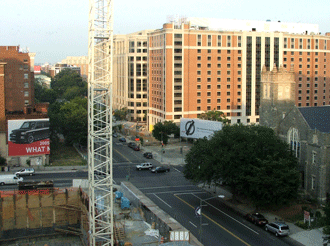 |
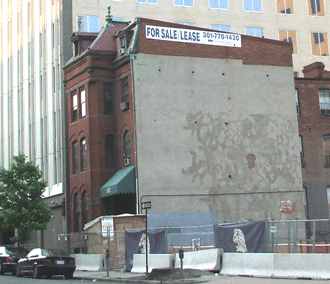 |
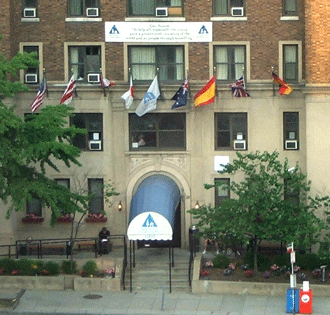 |
 |
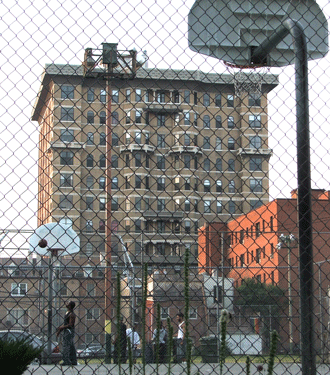 |
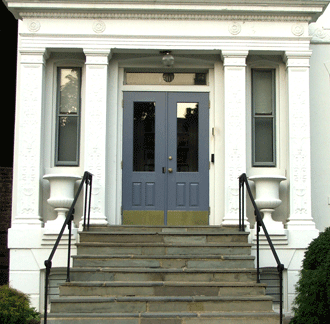 |
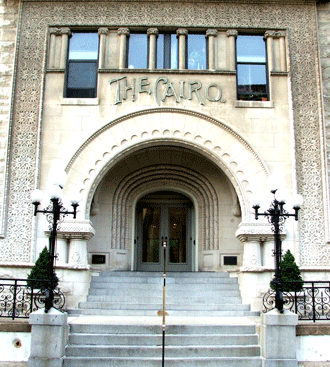 |
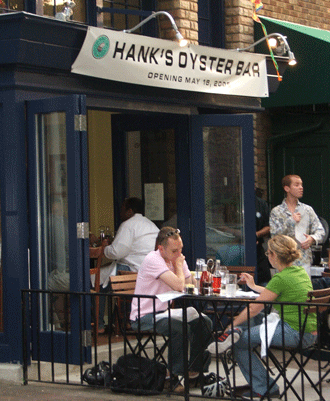 |
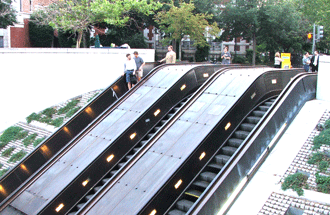 |
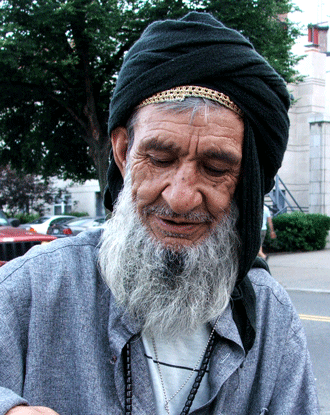 |
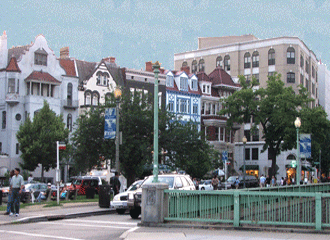 |